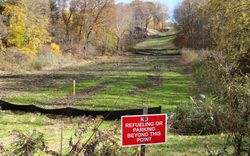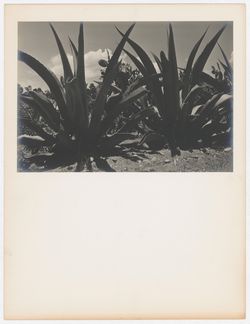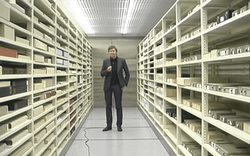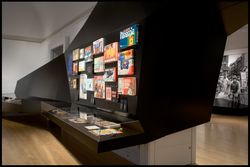articles
Troubled Waters
Nature reorganized
20 January 2017
Troubled Waters
The Hudson River as Symbol of America’s Past and Harbinger of the Future
Actions:
Nature reorganized
Series
AP193.S1
Description:
Series 1, Water Flux and Scrambled Flat, 2002-2010, documents the conception and evolution of a project that was originally a farm building and later became a geology and glaciology museum and research center focused on the Swiss Alps. The project was never realized. R&Sie(n) conceptualized Scrambled Flat as an experimental farm. The project goal was to reconcile European Union’s agricultural regulations, imposing a separation between animal and human living, to the community of Évolène traditional way of living, contiguously with animals, benefiting from the resources they offer. As conceived, Scrambled Flat creates an environment where fluidity between the existence of the animals and the humans is materialized. The size of the form is also adapted from a typical local rural house and exploits the heat of the animals and the insulation of the hay. For this project, R&Sie(n) approached the mayor of the community with the design proposition. The mayor then called for a competition, while also changing the program to an ecology museum and research center illustrating the local effects of global warming and the thawing of the Alps. R&Sie(n) won the competition with Water Flux, a reinterpretation of Scrambled Flat. The project was intended to uncover and exorcise the anxieties of ecological disaster, and the principle of flux related to seasonal change and, more broadly, climate change. The firm designed rooms that reproduce the geological and meteorological environment of the high mountains making it visible and experimental, offering refrigerated spaces for art installations and scientific demonstrations. The concept was also to build with the use of new technologies such as digital modelling, point scanning, and computer numerical control (CNC), combined with ancient local knowledge of knocking on trees to decide which specific pines have the best wood for construction. The building is designed to be constructed with local lamellar wood milled by nearby CNC. The resulting parts would be used for the structure, the insulation, the waterproofing and both the interior and exterior finishes. The design includes a grille wrapping the building, reproducing the profile of traditional houses and enclosure and making it possible to hold the snow inside a typo-morphological imprint. Therefore, the transformable envelope of the building reacts to the rhythm of the seasons. In the winter, the structure would appear like a solid cut-out of ice and snow, with cavities similar to those found in glaciers. In the summer, it would resemble piles of stones used in these areas to make borders. A small pool would collect rainwater and supply it to an interior artificial snowmaking system designed for the gallery. Transformation of the water is an integral part of the design. The records contain images of plans, sections, details for the structure of the façade, renderings, plans of the engineered structure, and photographs documenting the conception of the models with the CNC machinery. The Rhino 3D modelling files are also part of the records along with AutoCAD models and a video documenting the process. The records contain two physical models: a smaller polymer model at 1:20 scale representing the whole structure of the building, and a larger 1:1 latch wood fragment representing detail of the structure in its integrality.
2002-2010
Water Flux and Scrambled Flat
Actions:
AP193.S1
Description:
Series 1, Water Flux and Scrambled Flat, 2002-2010, documents the conception and evolution of a project that was originally a farm building and later became a geology and glaciology museum and research center focused on the Swiss Alps. The project was never realized. R&Sie(n) conceptualized Scrambled Flat as an experimental farm. The project goal was to reconcile European Union’s agricultural regulations, imposing a separation between animal and human living, to the community of Évolène traditional way of living, contiguously with animals, benefiting from the resources they offer. As conceived, Scrambled Flat creates an environment where fluidity between the existence of the animals and the humans is materialized. The size of the form is also adapted from a typical local rural house and exploits the heat of the animals and the insulation of the hay. For this project, R&Sie(n) approached the mayor of the community with the design proposition. The mayor then called for a competition, while also changing the program to an ecology museum and research center illustrating the local effects of global warming and the thawing of the Alps. R&Sie(n) won the competition with Water Flux, a reinterpretation of Scrambled Flat. The project was intended to uncover and exorcise the anxieties of ecological disaster, and the principle of flux related to seasonal change and, more broadly, climate change. The firm designed rooms that reproduce the geological and meteorological environment of the high mountains making it visible and experimental, offering refrigerated spaces for art installations and scientific demonstrations. The concept was also to build with the use of new technologies such as digital modelling, point scanning, and computer numerical control (CNC), combined with ancient local knowledge of knocking on trees to decide which specific pines have the best wood for construction. The building is designed to be constructed with local lamellar wood milled by nearby CNC. The resulting parts would be used for the structure, the insulation, the waterproofing and both the interior and exterior finishes. The design includes a grille wrapping the building, reproducing the profile of traditional houses and enclosure and making it possible to hold the snow inside a typo-morphological imprint. Therefore, the transformable envelope of the building reacts to the rhythm of the seasons. In the winter, the structure would appear like a solid cut-out of ice and snow, with cavities similar to those found in glaciers. In the summer, it would resemble piles of stones used in these areas to make borders. A small pool would collect rainwater and supply it to an interior artificial snowmaking system designed for the gallery. Transformation of the water is an integral part of the design. The records contain images of plans, sections, details for the structure of the façade, renderings, plans of the engineered structure, and photographs documenting the conception of the models with the CNC machinery. The Rhino 3D modelling files are also part of the records along with AutoCAD models and a video documenting the process. The records contain two physical models: a smaller polymer model at 1:20 scale representing the whole structure of the building, and a larger 1:1 latch wood fragment representing detail of the structure in its integrality.
Series
2002-2010
The third Architecture as Public Concern Lecture supports the CCA Research Network, an entity bringing together alumni from almost four decades of research programs at the CCA. This annual lecture explores the theme of the 2025 Architecture as Public Concern Fellowship, which asks, how can we build relation? It also aligns with the ambition of the CCA Research Network to(...)
CCA Research Network
12 November 2025, 10am to 11:30am
2025 Architecture as Public Concern Lecture: How Can We Build Relation?
Actions:
Description:
The third Architecture as Public Concern Lecture supports the CCA Research Network, an entity bringing together alumni from almost four decades of research programs at the CCA. This annual lecture explores the theme of the 2025 Architecture as Public Concern Fellowship, which asks, how can we build relation? It also aligns with the ambition of the CCA Research Network to(...)
CCA Research Network
articles
The planet is the client
What can be done to support Indigenous experiences of the built environment? Join landscape architect Naomi Ratte and architect Jason Surkan to learn more about the projects they are pursuing as the inaugural Indigenous-led Design Fellows at the CCA. Over the course of the week of February 20, Naomi and Jason will engage with CCA staff to create moments of learning and(...)
Shaughnessy House and online Keyword(s):
Indigenous-led design, fellow, Peguis First Nation, land rehabilitation, historical Métis housing
23 February 2023, 6:00 to 7:30 p.m.
Indigenous-led Design: Methods, Practices, Communities, Experiences
Actions:
Description:
What can be done to support Indigenous experiences of the built environment? Join landscape architect Naomi Ratte and architect Jason Surkan to learn more about the projects they are pursuing as the inaugural Indigenous-led Design Fellows at the CCA. Over the course of the week of February 20, Naomi and Jason will engage with CCA staff to create moments of learning and(...)
Shaughnessy House and online Keyword(s):
Indigenous-led design, fellow, Peguis First Nation, land rehabilitation, historical Métis housing
17 FIle
Lectures and interviews
DR1999:0367
Description:
videocassettes include: - "The Unreel" - "What a Wonderful World" - "Construction Site/City Scape" - P. Eisenman " Weak Form: Architecture in a Mediated Environment" (X4: March 25th, 1991; March 28th, 1991; April 1st, 1991; April 4th, 1991) - "1993 AIA Awards" - "National Council of Teachers of Mathematics" May 1991 - 1992 6/12 "Fukuoka" - 1992 6/7 "Daitoku - ji, in kyoto" - "2nd Simposium Internacional De Arquitectura IV" - "The Eye" November 1993 Japan Architecture - "Conferencia De Architectura" February 20th, 1992 - "The Edgo fo Between" P. E. at Colegio de Arquitectos de Madrid May 1988 - Progressive Architecture presentation excerpts - unknown - Japanese title, June 30th, 1992
Lectures and interviews
Actions:
DR1999:0367
Description:
videocassettes include: - "The Unreel" - "What a Wonderful World" - "Construction Site/City Scape" - P. Eisenman " Weak Form: Architecture in a Mediated Environment" (X4: March 25th, 1991; March 28th, 1991; April 1st, 1991; April 4th, 1991) - "1993 AIA Awards" - "National Council of Teachers of Mathematics" May 1991 - 1992 6/12 "Fukuoka" - 1992 6/7 "Daitoku - ji, in kyoto" - "2nd Simposium Internacional De Arquitectura IV" - "The Eye" November 1993 Japan Architecture - "Conferencia De Architectura" February 20th, 1992 - "The Edgo fo Between" P. E. at Colegio de Arquitectos de Madrid May 1988 - Progressive Architecture presentation excerpts - unknown - Japanese title, June 30th, 1992
17 FIle
research
Visiting Scholars 2011
Pedro Ignacio Alonso, Pontificia Universidad Católica de Chile, Santiago, Chile Topic: The Soviet I-464 Building System in Cuba and Chile, 1963-1973 Gaia Caramellino, Politecnico di Torino, Turin, Italy Topic: Architecture for Public Housing in the United States, 1930s-1940s Penelope Dean, University of Illinois, Chicago, United States Topic: Choice by Design,(...)
April 2011 to October 2011
Visiting Scholars 2011
Actions:
Description:
Pedro Ignacio Alonso, Pontificia Universidad Católica de Chile, Santiago, Chile Topic: The Soviet I-464 Building System in Cuba and Chile, 1963-1973 Gaia Caramellino, Politecnico di Torino, Turin, Italy Topic: Architecture for Public Housing in the United States, 1930s-1940s Penelope Dean, University of Illinois, Chicago, United States Topic: Choice by Design,(...)
research
April 2011 to
October 2011
1973: Sorry, Out of Gas
1973: Sorry, Out of Gas captures the architectural innovation spurred by the 1973 oil crisis, when the value of oil increased exponentially and triggered economic, political, and social upheaval across the world. Featuring over 350 objects including architectural drawings, photographs, books and pamphlets, archival television footage, and historical artefacts, it maps the(...)
7 November 2007 to 20 April 2008
1973: Sorry, Out of Gas
Actions:
Description:
1973: Sorry, Out of Gas captures the architectural innovation spurred by the 1973 oil crisis, when the value of oil increased exponentially and triggered economic, political, and social upheaval across the world. Featuring over 350 objects including architectural drawings, photographs, books and pamphlets, archival television footage, and historical artefacts, it maps the(...)
Project
Atom
AP144.S2.D71
Description:
File documents Cedric Price's participation in the design charette organized by the School of Architecture at Rice University, for Design Fete IV (4 June 1967 - 16 June 1967), in Houston, Texas. Six teams, each composed of one professional architect and six architecture students, were given a hypothetical location and program for a new town along with its educational needs and asked to create an 'educationally integrated' community. The results were published by Rice University in 'New Schools for New Towns'. File contains conceptual sketches showing plans for self-pace learning, intensive learning, large volume social activities, variable volume social activities, and commercial activities. Other drawings show links between diverse activity elements and illustrate a communications network with a central 'town brain'. Material in this group includes network analysis diagrams, diagrammatic plans showing activity nodes, and charts depicting design components ('kit of parts'). Some material in this file was published in: "Total Learning Environment with a Kit of Parts", 'Progressive Architecture' (April 1968), 208-210; 'Cedric Price-Works II' (London: Architectural Press, 1984), 18, 26-29; "Atom: Design for New Learning for a New Town", 'Architectural Design' (May 1968), 232-235. Material in this file was produced between 1967 and 1968. Charles Colbert, Paul Kennon, Niklaus Morganthaler, Robert Venturi and Thomas Vreeland appear as professional participants in the design charette. William Cannady appears as the director of Rice University's Design Fete IV. File contains conceptual drawings and textual records.
1967-1968
Atom
Actions:
AP144.S2.D71
Description:
File documents Cedric Price's participation in the design charette organized by the School of Architecture at Rice University, for Design Fete IV (4 June 1967 - 16 June 1967), in Houston, Texas. Six teams, each composed of one professional architect and six architecture students, were given a hypothetical location and program for a new town along with its educational needs and asked to create an 'educationally integrated' community. The results were published by Rice University in 'New Schools for New Towns'. File contains conceptual sketches showing plans for self-pace learning, intensive learning, large volume social activities, variable volume social activities, and commercial activities. Other drawings show links between diverse activity elements and illustrate a communications network with a central 'town brain'. Material in this group includes network analysis diagrams, diagrammatic plans showing activity nodes, and charts depicting design components ('kit of parts'). Some material in this file was published in: "Total Learning Environment with a Kit of Parts", 'Progressive Architecture' (April 1968), 208-210; 'Cedric Price-Works II' (London: Architectural Press, 1984), 18, 26-29; "Atom: Design for New Learning for a New Town", 'Architectural Design' (May 1968), 232-235. Material in this file was produced between 1967 and 1968. Charles Colbert, Paul Kennon, Niklaus Morganthaler, Robert Venturi and Thomas Vreeland appear as professional participants in the design charette. William Cannady appears as the director of Rice University's Design Fete IV. File contains conceptual drawings and textual records.
File 71
1967-1968
articles
From Commodity to Community?
The planet is the client
22 December 2016
The planet is the client





